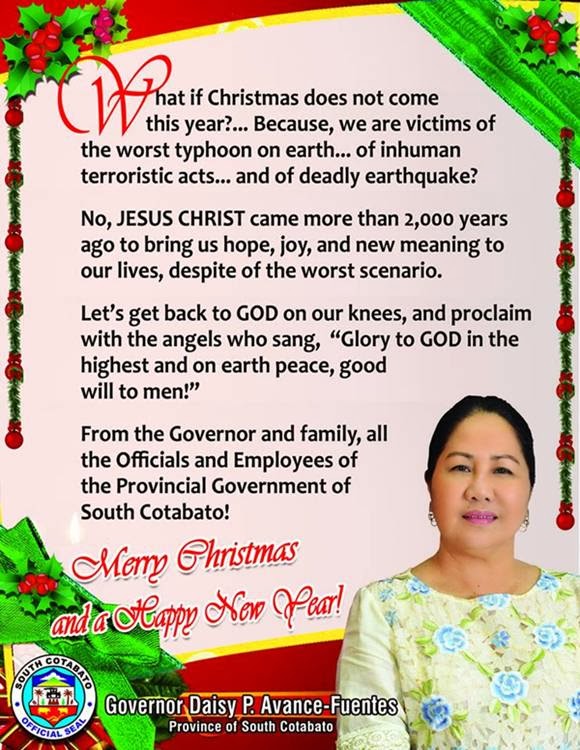Mindanao Culture And Beliefs
Despite this Lumads Catholic Christians and Muslims are free to express their beliefs and practices. Discrimination is common and this happens everywhere.

Ethnolingustic Groups Filipino Clothing Traditional Outfits Traditional Fashion
160pp To travel through Mindanao and Sulu is to pass through many worlds--through theprimeval world of the indigenous tribes through the exotic and colorful world of theMuslim groups and.

Mindanao culture and beliefs. This was a first in Lumad history. The body of ethnographic and linguistic literature on Mindanao they are variously known as Tboli Tboli Tböli Tagabili Tagabilil Tagabulul and Tau Bilil. The Christian and Missionary Alliance was successful in planting a church in a Muslim region of Mindanao in 1902.
Because of conflicts in the region the majority of them has migrated to neighboring countries such as Malaysia and Indonesia whereas those who stayed in the Philippines moved to some areas in Luzon. A roundabout with a fountain sits between old buildings in Manila. The Bilaan are strong believers of interdependence with the environment and the need to respect the will of the Creator.
Northern Mindanao is a region rich in culture which can be seen in their numerous festivals. That is because geographically Mindanao is just a stone away from our neighboring countries with strong Islam traditions. Their whereabouts and identity are somewhat imprecise in the literature.
The island has a marsh game refuge is unique to Mindanao. Lumad-Mindanaos main objective was to achieve self-determination for their member tribes meaning self-government within their ancestral domains and in accordance with their customary laws under the sovereignty of the Republic. The name Mindanao is a Spanish corruption of the name of the Maguindanao people the dominant ruling ethnic group in the Sultanate of Maguindanao in southwestern Mindanao during the Spanish colonial period.
Pobre CP et al 1978. Although Muslims are no longer a majority Islamic culture is evident. Mindanao Customs and Beliefs.
Despite this Lumads Catholic Christians and Muslims are free to express their beliefs and practices. The decision to have a common name was crucial and historic. Discrimination is common and this happens everywhere.
Some locate the Tbolis to the vicinity of the Lake Buluan. The Tboli people are one of the indigenous peoples of South Cotabato in Southern Mindanao. There are many mosques and distinctive brassware including the kris or dagger is manufactured.
Animism a belief that natural objects have souls is the oldest religion in the country practiced by indigenous peoples in the mountains of Luzon. From dress and worship to language and other aspects of culture a lot of things observed in the Visayas can also be found in Mindanao. Weaving is a craft that the Mandaya are excellent at.
Lumads have not succumbed to the modern ways of living. Despite the fact that Islamic beliefs are fervently held efforts to rid the culture of traditional island beliefs have not been totally successful and these beliefs persist and mix with the Maranao Islamic faith to some degree. Found here are three main cultural groups.
Some publications present the Tboli and the Tagabili as distinct peoples. They try to make ends meet by depending on the sea as divers fishermen and navigators. They term themselves Tboli.
They celebrate the feast day of St. Roaming around the provinces in Mindanao will give you a feast of Islamic culture in the form of traditions languages foods and architectures. One of the most popular festivals in the region is the Higalaay Festival in Cagayan de Oro City.
One example is that they still believe in the existence of spirits and gods and they have a god for each element. The early Filipinos who belong to various indigenous tribes living in the highlands and remote areas of Mindanao the Muslim Filipinos who were early converts to Islam and who regard the region as their traditional homeland and the Christian Filipinos who founded settlements and communities in the course of their migrations from other parts of the country. The Bilaan culture is unique the tribe practices indigenous rituals for almost everything they do because of their belief in the supremacy of the great Creator named Melu or Dwata who is the source of everything.
Mindanao was heavily influenced by Visayan culture. Mindanao cultures Practices and Beliefs Different inhabitants in Mindanao result in big differences of practices and beliefs. Originally from the islands of Sulu in Mindanao theyre known as the sea tribes living on houseboats.
While tribal designs can be too busy and all over the place the Mandaya observes an elegant discipline in their intricate designs. The Mandaya embodies sophistication in tribal Philippine culture. Another festival is Kaamulan festival in Bukidnon.
The Northern Mindanao culture is interesting to know about because of their tribal beliefs and customs that up to this day are still existing. Mindanao is known to house most of our Muslim Filipino brothers and sisters. Augustine every 28th day of August.
Perhaps this could be attributed to the constant raiding by the Visayans who were after all feared for their propensity for pangangayaw or sea raiding. Practices and Beliefs Different inhabitants in Mindanao result in big differences of practices and beliefs. The name itself means people of the lake Lanao though it is usually translated to people of the flood plains in modern sources.
Mindanao is Muslim outpost in the predominantly Roman Catholic Philippines.

Tausug Filipino Clothing Philippines Culture Filipino Culture

Tubad Mindanao Assembly Of Tagakaolo Tribe In Sarangani Philippines People Filipino Culture Indigenous Peoples

More On The Philippines Diverse Culture Let Us Visit The Beauty Of Davao During The Kadayawan Festival Kadayawan Festival Philippine Traditions Davao City

Mindanao Tribe Mindanao Filipino Culture Philippines Culture

Photos Philippines Mindanao Tboli Tribal Dance Via Everywhere Tribal Dance Filipino Clothing Filipino Culture

Komentar
Posting Komentar